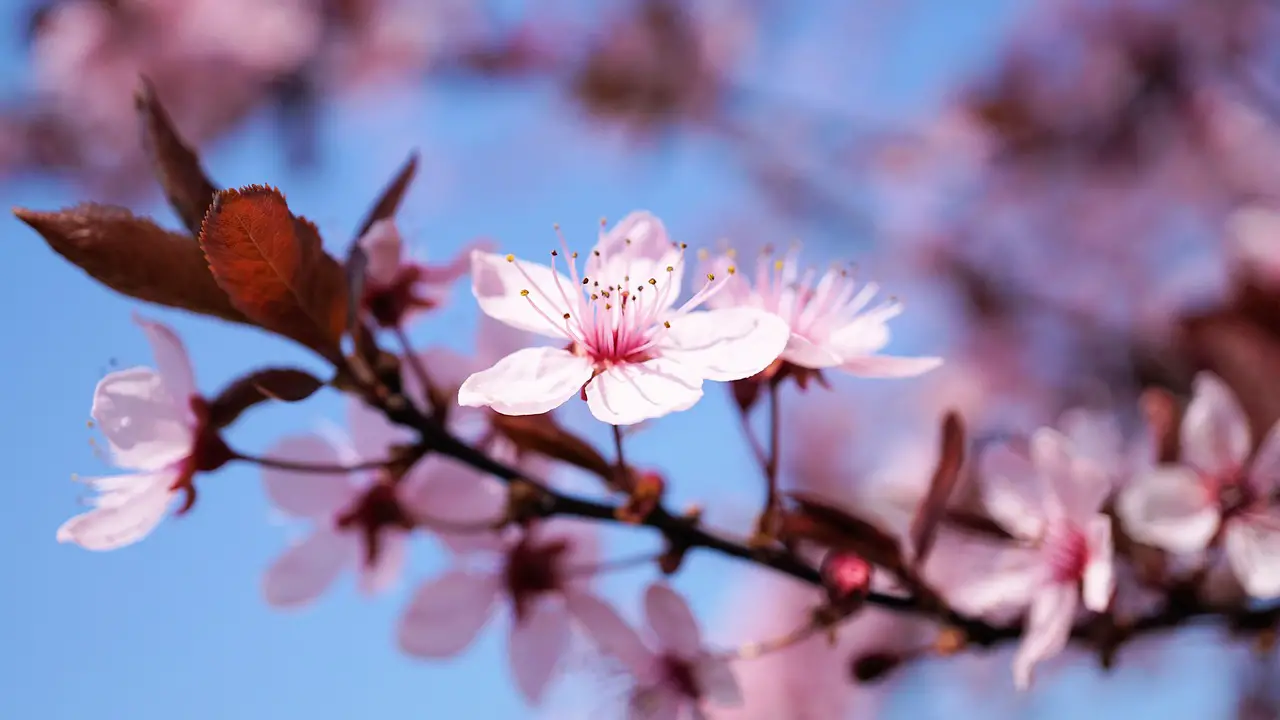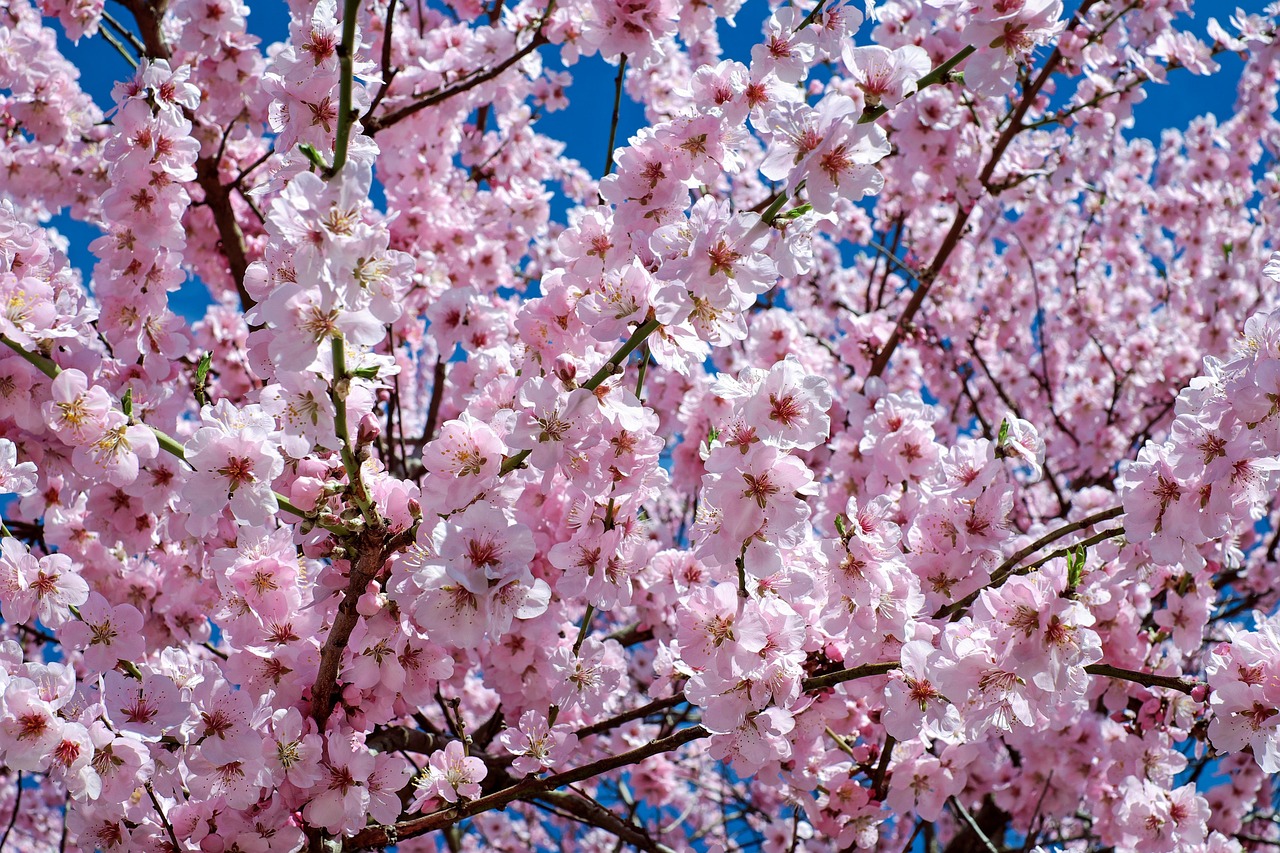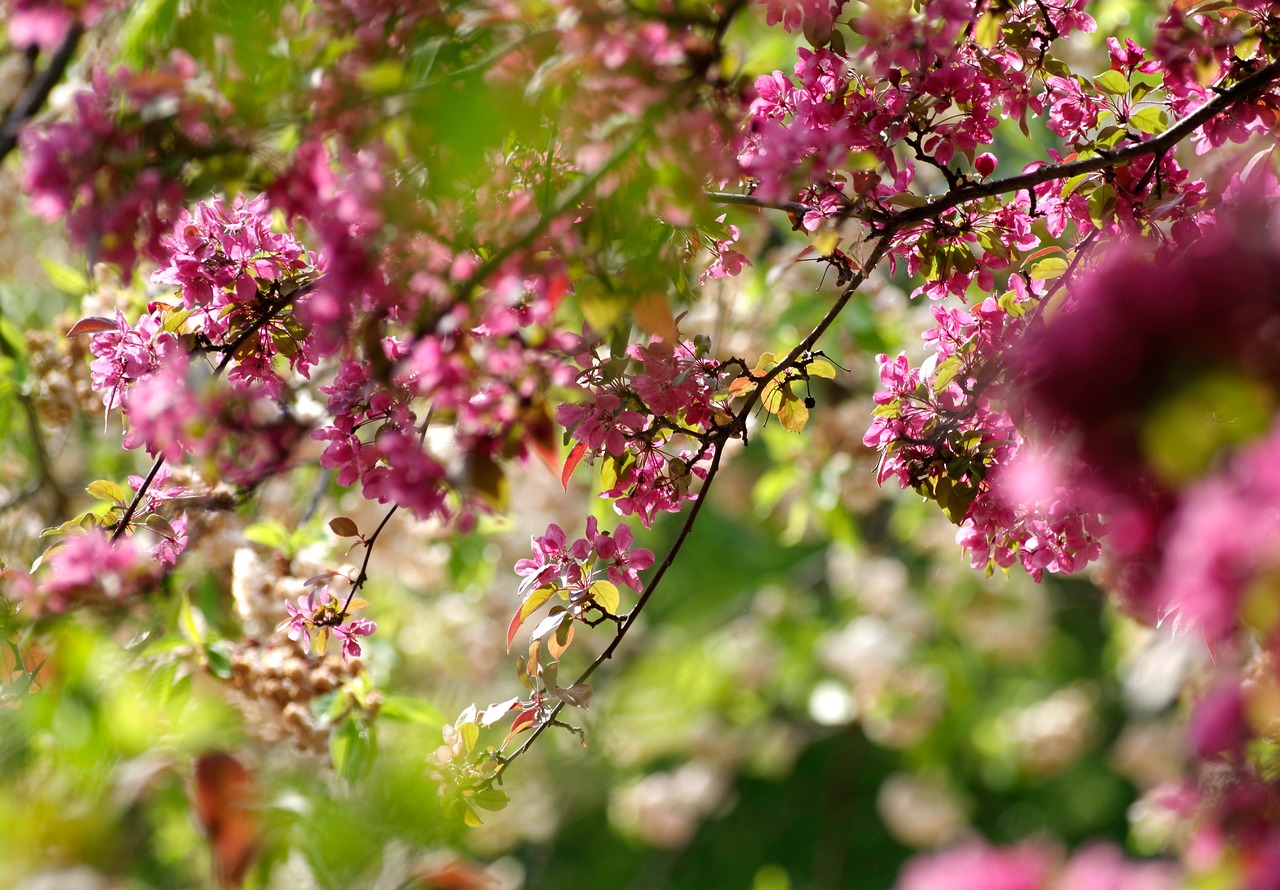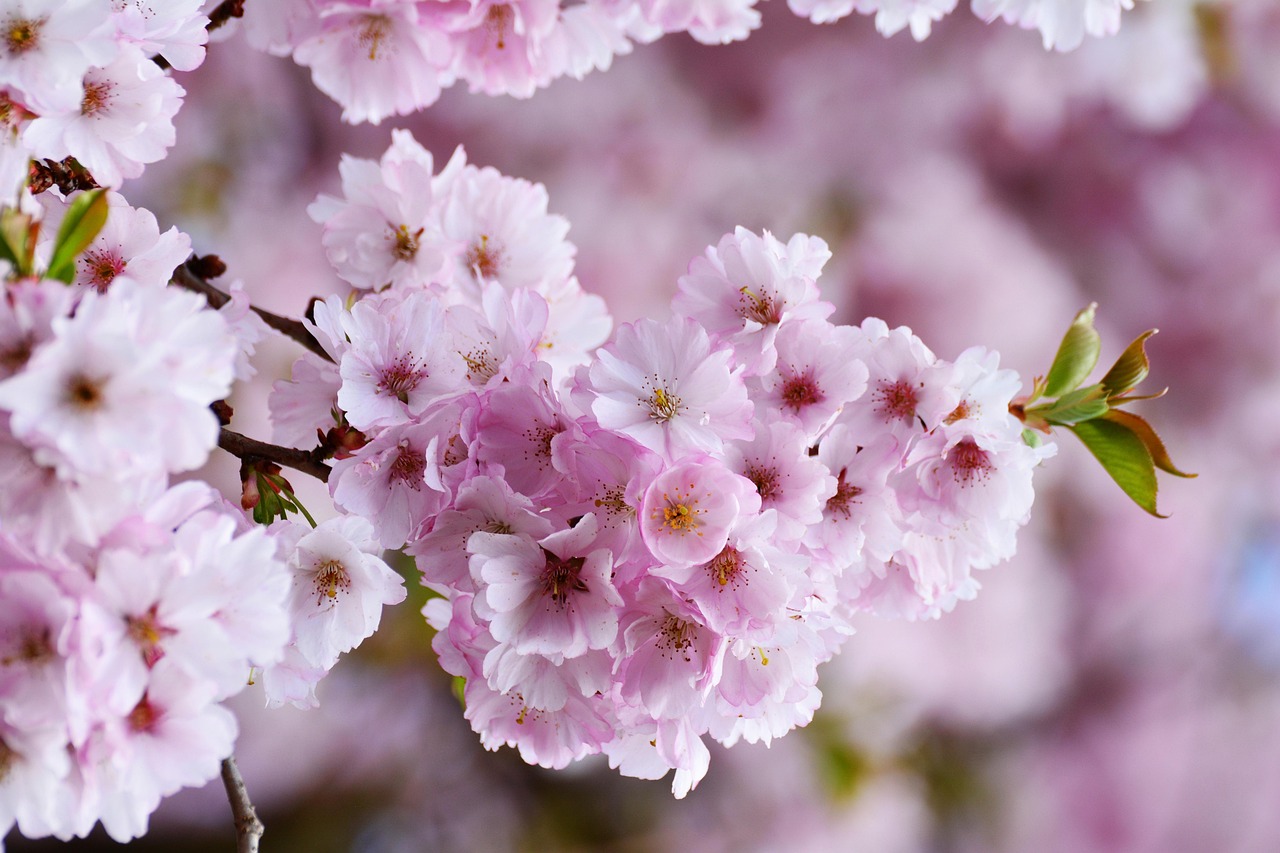Pruning cherry trees at the right time and in the correct manner can significantly extend their blooming seasons. Proper pruning encourages healthy growth, improves air circulation, and enhances sunlight exposure, all contributing to vibrant blossoms.
Cherry trees are a beloved addition to many gardens due to their stunning flowers and delicious fruit. They belong to the genus Prunus and include various species, each with unique characteristics. However, to maintain their beauty and productivity, regular care is essential. One of the most effective ways to care for cherry trees is through pruning.

Pruning is not just about cutting branches. It involves creating a structure that allows the tree to thrive. For cherry trees, proper pruning can lead to better blooms, increased fruit production, and overall tree health. Understanding when and how to prune is crucial for achieving these benefits.
Understanding Cherry Trees
Before diving into pruning techniques, it is essential to understand the types of cherry trees and their unique requirements. There are two main categories of cherry trees: sweet cherries (Prunus avium) and sour cherries (Prunus cerasus). Each type has distinct growth habits and blooming patterns, which influence pruning strategies.
Sweet cherry trees are typically larger and more vigorous than sour ones. They often require more extensive pruning to maintain shape and improve air circulation. Sour cherry trees are usually smaller and may require less intervention. Regardless of the type, both benefit from proper pruning practices.

| Type of Cherry Tree | Characteristics | Pruning Needs |
|---|---|---|
| Sweet Cherry | Larger, vigorous growth, produces sweet fruits | Extensive pruning for shape and air circulation |
| Sour Cherry | Smaller size, typically easier to manage | Moderate pruning to maintain health |
Timing is another critical factor in pruning cherry trees. The best time for pruning is during the late winter or early spring before new growth begins. This timing allows for minimal stress on the tree and encourages robust flowering when spring arrives. Pruning at this time can also help prevent potential diseases that may arise from winter damage.
The Benefits of Pruning Cherry Trees
Pruning cherry trees offers numerous advantages that go beyond aesthetic appeal. These benefits include:
- Enhanced Airflow: Pruning helps reduce dense foliage, allowing better airflow through the tree. This can decrease the chances of fungal diseases.
- Increased Sunlight Exposure: By selectively removing branches, sunlight can reach more parts of the tree, promoting healthier growth and more abundant blooms.
- Improved Structure: Regular pruning encourages a strong central leader and an open canopy structure, which supports overall tree health.
- Better Fruit Production: Properly pruned trees tend to produce larger and more flavorful fruits due to improved nutrient distribution.
Understanding these benefits highlights why proper pruning is vital for maintaining the beauty and productivity of cherry trees. It is not merely a task but an essential part of caring for these magnificent plants.

Basic Pruning Techniques for Cherry Trees
When pruning cherry trees, several techniques can be applied to achieve optimal results. Here are some basic methods:
- Thinning: This involves removing entire branches back to their point of origin. Thinning allows for better light penetration and airflow throughout the tree.
- Heading Back: This technique shortens long branches by cutting them back to a bud or lateral branch. Heading back encourages bushier growth and helps maintain size.
- Crown Reduction: For trees that have grown too tall or wide, crown reduction involves reducing the height or spread of the tree while maintaining its natural shape.
- Cleaning: Remove any dead, damaged, or diseased branches to promote overall health. This step is crucial before any major pruning takes place.
Each technique serves a specific purpose, contributing to the overall health and aesthetics of the tree. Familiarizing yourself with these methods will empower you to make informed decisions when caring for your cherry trees.
In conclusion, understanding the essentials of cherry tree care, particularly through pruning, lays the foundation for a successful gardening experience. With the right techniques and timing, gardeners can enjoy longer blooming seasons and healthier trees.

When to Prune Cherry Trees
Timing is critical when it comes to pruning cherry trees. Pruning at the right moment can lead to healthier trees and more vibrant blooms. The ideal time for pruning varies slightly based on the type of cherry tree and the local climate, but there are some general guidelines to follow.
Optimal Pruning Seasons
Generally, the best times to prune cherry trees are during late winter to early spring. However, specific conditions can affect this timing:
- Late Winter (February to Early March): This is the most common time to prune cherry trees. The trees are still dormant, which minimizes stress and allows for vigorous growth when spring arrives.
- Early Spring (Just Before Bud Break): Pruning just before the buds begin to swell can be effective, as it allows for quick recovery and encourages new growth.
- Post-Bloom Pruning: For some varieties, light pruning after blooming can help remove spent flowers and encourage better fruit production.
- Avoid Summer Pruning: Summer pruning can lead to excessive sap loss and may not allow the tree enough time to heal before winter.
Tools Needed for Pruning
Having the right tools is essential for effective and safe pruning. Using appropriate tools ensures clean cuts and helps prevent damage to the tree. Here are some essential tools for pruning cherry trees:
- Hand Pruners: Ideal for cutting small branches and stems up to ¾ inch thick. Look for sharp, high-quality pruners that provide a clean cut.
- Loppers: These are useful for branches that are too thick for hand pruners, typically ranging from ¾ inch to 1½ inches in diameter.
- Saw: A pruning saw is necessary for larger branches. Choose a lightweight saw that can handle thick limbs effectively.
- Gloves: Protect your hands with durable gardening gloves while pruning to prevent cuts and scrapes.
- Safety Glasses: Always wear safety glasses to protect your eyes from falling branches or debris.
Pruning Techniques Explained
Understanding specific pruning techniques is crucial for achieving the desired shape and health of your cherry trees. Below are some detailed explanations of the previously mentioned techniques:
Thinning
This technique involves selectively removing entire branches from the tree. Thinning helps improve light penetration and air circulation, which can reduce disease risk. To thin effectively:
- Select branches that are crossing or crowding each other.
- Remove weaker branches while preserving strong, healthy ones.
- Aim for a balanced appearance, allowing sunlight to reach all parts of the tree.
Heading Back
Heading back is focused on shortening branches to promote bushier growth. This method is particularly useful for young trees that need shaping. To perform heading back:
- Identify long branches that extend outwards.
- Cut back to a healthy bud or lateral branch.
- Avoid cutting too close to the bud, as this can damage it.
Crown Reduction
Crown reduction helps maintain a manageable size and shape for taller trees. This technique is beneficial for cherry trees that have outgrown their space. Steps include:
- Identify the tallest branches or those that extend too far outward.
- Cut these branches back to a lateral branch or bud, ensuring even distribution of weight.
- Aim to maintain the natural shape of the tree while reducing height.
Avoiding Common Mistakes
Even experienced gardeners can make mistakes when pruning cherry trees. Being aware of common pitfalls can help you avoid them:
- Over-Pruning: Removing too many branches can stress the tree, reducing blooming and fruit production.
- Poor Cutting Techniques: Always use sharp tools and clean cuts to minimize damage and promote healing.
- Ignoring Tree Health: Failing to assess the overall health of the tree before pruning may lead to unintended consequences.
- Pruning at the Wrong Time: Pruning during late summer or fall can expose the tree to winter damage and disease.
By avoiding these common mistakes, you can ensure that your cherry trees remain healthy and vibrant, leading to prolonged blooming seasons and fruitful harvests.
Additional Considerations for Cherry Tree Care
Caring for cherry trees goes beyond just pruning. Other factors contribute significantly to their overall health and blooming potential. Here are some additional considerations:
- Soil Quality: Ensure that your cherry trees are planted in well-draining soil rich in organic matter. Regular soil testing can help maintain optimal pH levels.
- Watering Needs: Cherry trees require consistent watering during dry spells, especially when they are young or newly planted.
- Pest and Disease Management: Regularly check for signs of pests or diseases. Early detection allows for timely intervention, protecting your trees from damage.
- Fertilization: Use a balanced fertilizer in early spring to support growth. Follow recommended guidelines based on soil tests to avoid over-fertilization.
By integrating these care practices with effective pruning techniques, gardeners can significantly enhance the health and beauty of their cherry trees. Proper maintenance leads not only to longer blooming seasons but also thriving fruit production year after year.
Understanding Cherry Tree Varieties
To effectively prune cherry trees and prolong their blooming seasons, it is important to understand the different varieties of cherry trees. Each type has distinct characteristics, growth patterns, and care requirements that influence pruning techniques.
Popular Cherry Tree Varieties
Here are some of the most common cherry tree varieties found in gardens:
- Sweet Cherry (Prunus avium): Known for their large, sweet fruits, sweet cherry trees grow tall and require significant space. They thrive in well-draining soil and need full sun exposure.
- Sour Cherry (Prunus cerasus): These trees are smaller and easier to manage. Sour cherries are often used in cooking and baking due to their tart flavor. They have a shorter blooming period but produce abundant fruit.
- Flowering Cherry (Prunus serrulata): Primarily grown for their ornamental value, flowering cherry trees display stunning blossoms in spring. They do not produce edible fruit but are popular for landscaping.
- Compact Cherry Varieties: There are also dwarf or compact varieties available, which are ideal for small gardens or container planting. These varieties usually require less pruning and are easier to manage.
Identifying the Right Pruning Approach for Each Variety
Knowing the variety of your cherry tree helps determine the appropriate pruning approach. Each type may respond differently to pruning methods based on its growth habits and flowering characteristics.
Sweet Cherry Pruning Techniques
Sweet cherry trees benefit from more aggressive pruning techniques to maintain their size and shape. Consider the following tips:
- Thinning Cuts: As sweet cherry trees can grow quite large, thinning cuts should be prioritized to allow light into the center of the tree.
- Heading Back: Regularly heading back long branches encourages bushier growth. Aim to cut back branches to a healthy bud or lateral branch.
- Focus on Structure: Maintain a strong central leader to support heavy fruit production. Remove competing leaders as necessary.
Sour Cherry Pruning Techniques
Sour cherry trees require different pruning strategies due to their smaller size and bushier growth pattern:
- Less Aggressive Thinning: Thinning should be done carefully to avoid reducing the number of fruiting branches too much.
- Crown Maintenance: Focus on maintaining an open crown to ensure good air circulation without over-pruning.
- Post-Bloom Care: Lightly prune after blooming to remove spent flowers and encourage better fruit production in subsequent years.
The Role of Weather in Pruning Cherry Trees
The weather plays a significant role in the health of cherry trees and their blooming cycles. Understanding how different weather conditions affect these trees can help you time your pruning efforts more effectively.
Impact of Temperature on Blooming
Cherry trees are sensitive to temperature fluctuations, which can influence their blooming schedules:
- Chilling Hours: Cherry trees require a certain number of chilling hours (cold temperatures) during winter for proper blooming. Insufficient chilling can result in delayed or poor flowering.
- Frost Risks: Late frosts can damage blossoms. Pruning too early in spring may expose trees to frost damage if temperatures drop unexpectedly.
- Heat Stress: High temperatures during the growing season can stress trees, making them more susceptible to diseases. Proper pruning allows for better airflow, reducing heat stress.
Pest Control Strategies for Healthy Cherry Trees
Pests can significantly damage cherry trees and impact their blooming capabilities. Implementing effective pest control strategies is essential for maintaining healthy trees.
Common Cherry Tree Pests
Some pests that commonly affect cherry trees include:
- Cherry Fruit Fly: This pest lays eggs in the fruit, leading to worm-infested cherries. Regular monitoring and insect traps can help manage their population.
- Aphids: These small insects suck sap from leaves, causing curling and yellowing. Introduce beneficial insects like ladybugs to control aphid populations naturally.
- Spider Mites: These tiny pests thrive in dry conditions, leading to stippling on leaves. Regular watering can help reduce their prevalence.
Pest Management Techniques
Effective pest management involves a combination of cultural practices and treatments:
- Cultural Controls: Maintain tree health through proper watering, fertilization, and pruning techniques. Healthy trees are less susceptible to pest attacks.
- Organic Insecticides: If pests become problematic, consider using organic insecticides that target specific pests while minimizing harm to beneficial insects.
- Regular Monitoring: Inspect trees regularly for signs of pest activity. Early detection allows for timely intervention and better control of infestations.
Seasonal Care Beyond Pruning
Caring for cherry trees involves more than just pruning. Seasonal maintenance ensures trees remain healthy year-round, promoting prolonged blooming seasons and fruitful harvests.
- Spring Care: After pruning, apply a balanced fertilizer to encourage growth and support flowering. Ensure adequate watering during dry spells.
- Summer Monitoring: As the growing season progresses, continue to monitor for pests and diseases. Water consistently, especially during hot weather.
- Fall Preparations: As temperatures drop, consider applying mulch around the base of the tree to retain moisture and protect roots from freezing temperatures.
- Winter Protection: In colder regions, protect young trees from harsh winter conditions by wrapping trunks with burlap or using tree guards.
This comprehensive care approach ensures that cherry trees thrive throughout their life cycles, leading to extended blooming periods and increased fruit production. By combining pruning with attentive seasonal care, gardeners can enjoy vibrant blossoms year after year.
In addition to the care practices already discussed, there are a few more considerations that can enhance the health and blooming potential of cherry trees. These include the role of companion planting, the importance of pruning techniques in relation to tree age, and understanding the specific needs of different cherry varieties. Each of these aspects contributes to a holistic approach to cherry tree cultivation.
Companion Planting for Cherry Trees
Companion planting involves strategically planting different species together to benefit each other. For cherry trees, certain companion plants can promote health and enhance growth. Here are a few beneficial companions:
- Garlic: This plant is known for its pest-repelling properties. Planting garlic near cherry trees can deter aphids and other harmful insects.
- Chives: Similar to garlic, chives help repel pests. Their flowers also attract beneficial pollinators, which can enhance fruit set.
- Marigolds: These flowers not only add beauty but also attract beneficial insects and repel nematodes that can harm cherry tree roots.
- Crimson Clover: This cover crop improves soil nitrogen levels and supports soil health, benefiting your cherry trees.
By incorporating companion plants, you can create a more diverse and resilient garden ecosystem that supports the growth of your cherry trees.
Pruning Techniques According to Tree Age
The pruning technique you choose may also depend on the age of the cherry tree. Young trees require different approaches compared to mature ones:
Young Cherry Trees
For young cherry trees, the focus should be on establishing a strong structure:
- Initial Training: Train young trees by selecting a central leader and removing competing branches. This helps create a strong foundation for future growth.
- Light Pruning: Lightly prune to encourage lateral growth while maintaining the primary structure. Avoid heavy pruning until the tree matures.
- Regular Shaping: Regularly assess the shape to ensure that young trees develop a balanced canopy as they grow.
Mature Cherry Trees
Mature cherry trees need maintenance to continue producing blooms and fruit:
- Renewal Pruning: For older trees, consider renewal pruning, which involves removing older, less productive branches to stimulate new growth.
- Balance and Airflow: Maintain an open structure to allow for airflow. Remove inward-growing branches that may create overcrowding.
- Monitor Health: Assess the tree’s health regularly, and make adjustments based on its response to previous pruning sessions.
Understanding Local Climate Conditions
Local climate conditions significantly impact the health of cherry trees. Different regions have varying temperatures, humidity levels, and rainfall patterns, all of which influence how you care for your trees.
- Drought Conditions: In areas prone to drought, ensure consistent watering during dry spells. Use mulch to conserve soil moisture and regulate temperature.
- High Humidity: In humid climates, be vigilant about monitoring for fungal diseases. Provide adequate spacing between trees to improve air circulation.
- Cold Winters: In cold regions, ensure proper winter protection measures are taken for young or newly planted trees to prevent frost damage.
By adapting your care routine to local climate conditions, you can promote healthier cherry trees that are better equipped to thrive and bloom consistently.
Final Thoughts
Caring for cherry trees through proper pruning and seasonal maintenance is essential for promoting vibrant blooms and healthy fruit production. By understanding the specific needs of different cherry varieties, implementing companion planting strategies, and adapting your approach based on tree age and local climate conditions, you can create an environment conducive to flourishing cherry trees. The combination of these practices not only enhances their aesthetic appeal but also contributes to their longevity and productivity.
Ultimately, fostering a deep understanding of your cherry trees allows for informed decision-making throughout their growth cycles. As you cultivate these beautiful trees in your garden, remember that patience and attention to detail will yield rewarding results in the form of stunning blossoms and delicious fruit for years to come.
Your journey with cherry trees can be both fulfilling and educational. Embracing best practices in pruning, care, and companion planting will ensure that your efforts are rewarded with a bountiful and beautiful display each blooming season.
